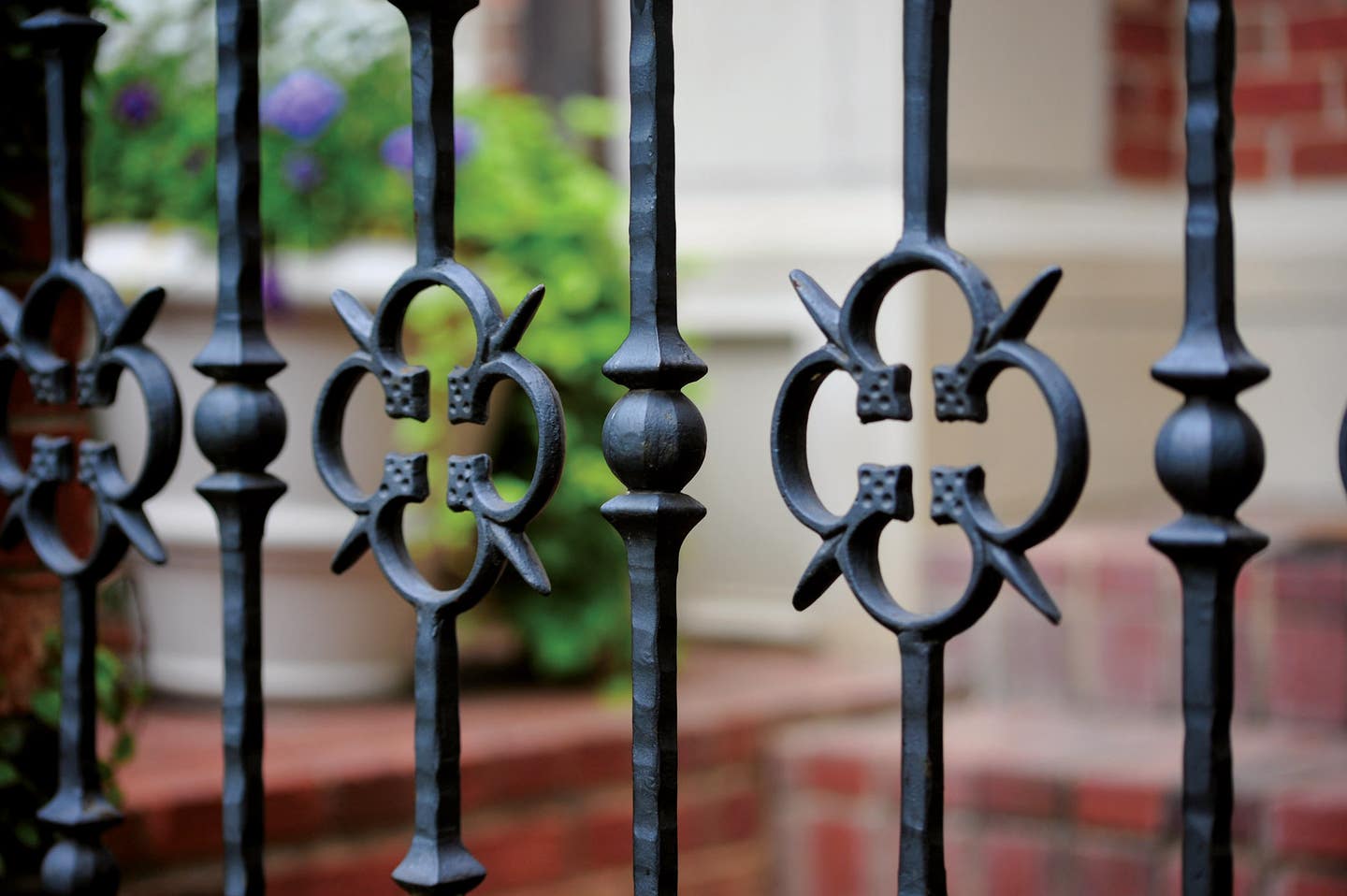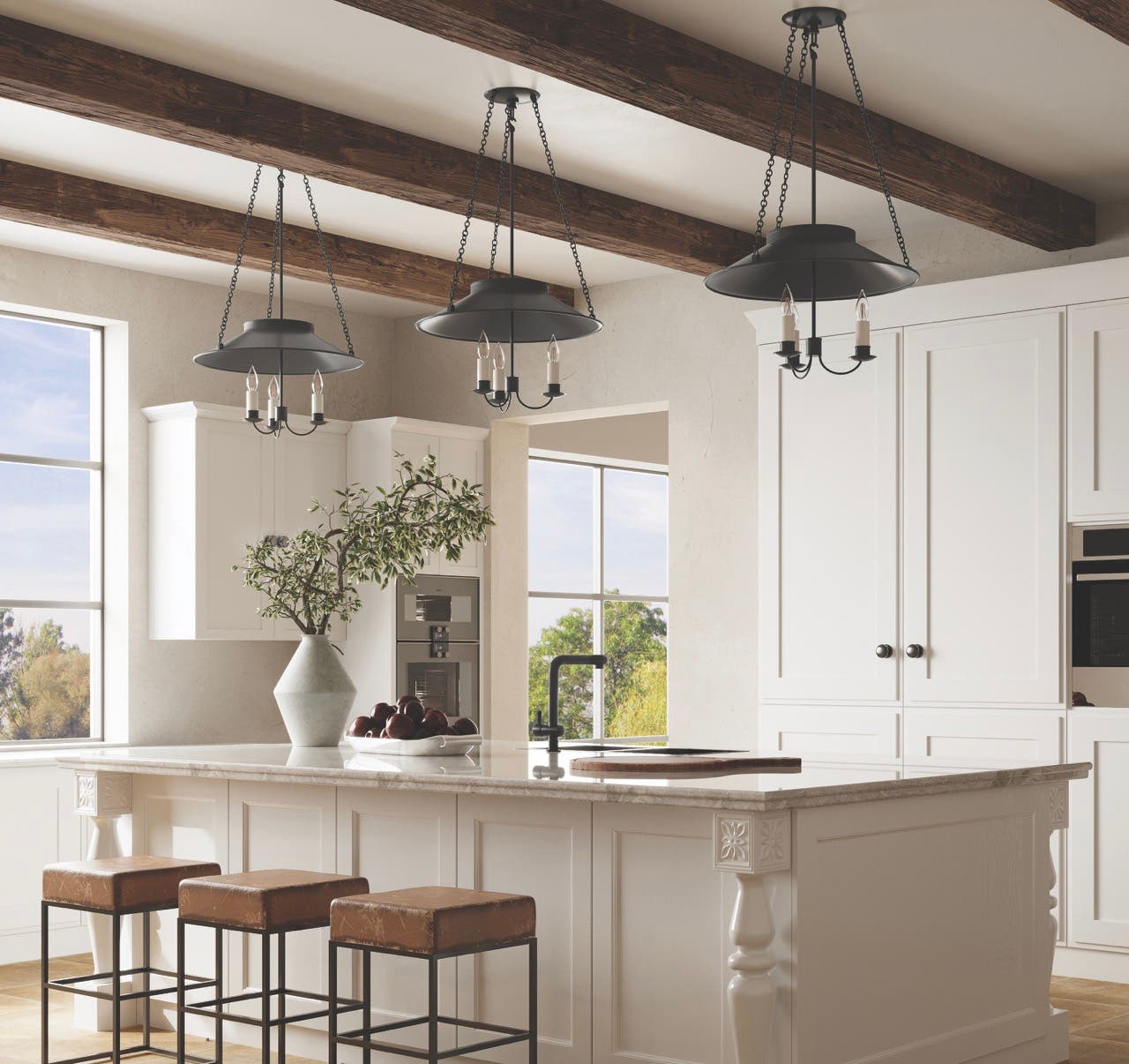
Product Reports
Metalwork for Traditional Building: An Expert Opinion
When it comes to considering architectural metalwork, “it’s important that the metalwork as a whole retains its authenticity, integrity of design, and sense of purpose,” explains Larry Robertson of King Architectural Metals in Dallas, Texas, “and it’s important to get it right on day one.” To help, his company has developed a unique, private line of related hand-forgings. “Our Koenig Eisen products are component pieces that, when put together, are able to create enormously elaborate—or simple—staircases, railings, fences, gates, balconies—any place where traditional architecture utilizes metalwork.”
Robertson says the line represents what they feel is the best of architectural design from a very wide historical spectrum. Styles range from early Greco-Romanesque Iron, Gothic Iron, Renaissance Iron, Baroque Iron, Rococo Iron and Empire, to Art Deco Iron, Modern and Post-Modern Iron as well. He says that any place they’ve had the opportunity to present a hand-forged element into the architectural mix, they have. “The majority of the time, those are covered by balusters, handrails, scrolls, rings, panels, and so on, but on occasion you’ll also see some hardware-type products, such as latches and hinges.”
There’s authenticity in the metals too. “The majority of the Koenig Eisen line is going to be either hot-rolled or cold-rolled steel,” says Robertson. “Within that group are a few aluminum forgings, but the steels are by far the most popular because we’ve tried to stay as close as we can to the original material types.”
He adds that across the company’s full range, they offer “quite a broad line of products that encompass a number of different types of materials, including brass, aluminum, stainless steel, and zinc alloy.” Here, metal types often come down to practicality. Since they are a national company serving different climates just within the continental United States, different parts of the country tend to favor different types and sizes of materials. “For example, in some areas where weather and corrosion for outdoor projects is a concern—salt spray and salty air close to the coast, for instance—we do better offering aluminum solutions, as opposed to say, Dallas, where corrosion isn’t as much of a problem.”
The company also is equipped to do custom casting. “Seven or so years ago we took part in the restoration of the historic Ohio Governor’s Mansion, and we custom-cast finials, rings, bases, posts, and caps from originals forged in the 1920s.”
While Robertson says they enjoy a reputation as the nation’s largest provider of decorative and ornamental metalwork, for a good majority of customers they’re also a one-stop shop for basically everything needed for their projects. For example, he says they have prefabricated fence panels for both residential and commercial applications, and a line of access control and gate motors for security entrances and perimeters. “We have a stainless steel line for really any kind of construction, as well as light construction commodity steel and molded, long-bar hand rails.” Balusters with different types of hammering or manipulations in their shapes are very popular, he says. Equally welcome is the company’s same-day shipping policy.
There’s help on the dimensional level too in the form of the company’s Material Family Coding System. Here, materials of the same size and shape cross-section are identified by letters. “For example, our ‘A Family’ is ½" square, and that’s the foundational structure of all of the balusters, rings, panels, scrolls—in other words, all of the foundational pieces are made from the same exact type of material.” The material itself may also be solid or tube, which is a consideration when weight is a factor. “Those rings, balusters and so forth made from the same size of material can then come in different sizes, height- and width-wise.” He adds that the customer can also choose a number of finials that will go with all of their lines.
There’s more to the Family concept than meets the eye. “Depending upon the application or even the region of the country—where specific building codes might vary from one jurisdiction to another—our product lines are designed to go across a number of different opportunities and restrictions.” This may just depend upon what the local building inspector requires. “If the local building codes in, say, Dallas, require that all exterior balcony balusters be no less than 9/1", then we have 9/16" products for them to meet that code—and in many cases the exact same pattern and design is available as another item in ½" or 5/8" or ¾". So we have a number of different styles that come in a number of different sizes—and in a number of different finishes like hammering and fluting.”
In essence, Robertson says what most of his customers look for is different choices. “They want to be able to develop a foundational design, and then elaborate with choices. These can even be new designs and styles that still retain the hand-craftsmanship of forgings, but with a little more modern twist to them—yet still fitting easily into historic properties.”
Gordon H. Bock is an architectural historian, instructor with the National Preservation Institute, and speaker through www.gordonbock.com.








